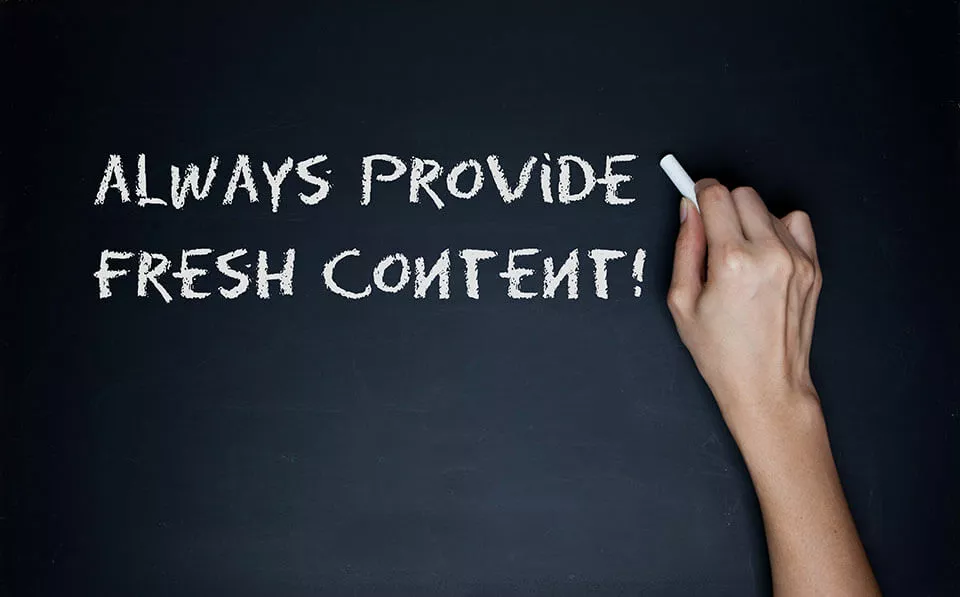Google ranking factors
The organic web search is very important for a commercial website. Visitors regularly access sites that appear in the initial search results pages without the website owner even having to lift a finger. These high rankings generate free traffic and convert potential customers into actual customers. A good ranking from the search engine usually correlates with a high turnover. Websites should make an effort to optimise their website or online shop for the search engine. Google is the clear market leader with 80 % of US searches taking place via this search engine. Optimising your website for Google isn’t easy; there are over 200 factors influencing the algorithm that creates the search engine results page (SERPs). Some of these factors are already widely known, whereas some are secret in order to prevent targeted manipulation. SEO specialists have created a list containing ranking factors, which are widely thought to be valid.
- Improve your Google ranking without paying an agency
- Reply to reviews and generate social media posts faster
- No SEO or online marketing skills needed
How to optimise your website for Google search
All statements about Google’s search algorithm are based on hints given by Google employees in interviews and press releases. They have also been verified by crosschecking patent applications as well as empirical observations. Nevertheless, the following points aren’t officially confirmed. The following ranking factors have proven themselves in daily practice; websites optimised for these criteria generally obtain a good position in the organic search results.
Keywords in URLs
If a keyword is included in a URL, it lets the search engine know that the site has a certain relevance to the search query. URLs containing keywords are often associated with good Google rankings, although in recent years, keyword domains or subdomains have become less important. Some SEO experts suggest a connection between the word order in the URL and the ranking. They claim the main keyword is more significant if it’s at the beginning of the URL, but repeating the keyword should be avoided at all costs. Regardless of the ranking, keyword domains also have the advantage that the relevant search terms can be highlighted in bold in the search results list.
Keyword in the title tag
Placing relevant search terms in the title tag of an HTML page is even more important than the keyword in the URL. This tag defines the title of a website and counts as an important content element. Equally important is the relevance signal that is sent out by the main keyword in the title tag; it’s theorised that a prominent position at the beginning of the title sends out a stronger relevance signal and therefore has a positive influence on the ranking. Keywords in website titles are presented in bold in the SERPs.
Keyword density
Due to the risk of manipulation, Google doesn’t attribute much importance to keyword density as it used to. Despite this, keywords still serve to convey the topic of a website to the search engine. The absolute frequency of relevant search terms in a text is not as important as how relevant the keyword is. Googles uses the TF-IDF (term frequency-inverse document frequency) of a website, in other words, the keyword density in relation to the inverse document frequency. The latent semantic indexing (LSI) is also used; this forms a thematic cloud of related words from the main keyword. In order to rank highly, a text should not only contain the specified keyword, but also synonyms for it. If the text does contain relevant synonyms, it sends out a stronger relevance signal.
Keyword emphasis
If keywords in a text are emphasised with HTML markups, it signals to the search engine that these words are especially important to the text. A text containing relevant search terms is classified as relevant during the web search and will therefore rank higher. Keywords or keyword phrases can be made to stand out from the rest of the text through bolding, italicising, underlining, and font size.
Keywords in titles
A special case regarding keyword emphasis is the placing of relevant search terms in the HTML main header (H1) and in the sub headings (H2 and H3). Google rates keywords in these structural elements very highly since they act as relevance signals and facilitate the understanding of the website content.
Keyword stemming
Google reduces variants of a search term into one collective word stem. SERPs take into account sites that contain keywords in different grammatical forms as well as websites with exact match keywords. It can be assumed, on the contrary, that texts exclusively containing exact match keywords may not rank as well since conjugating search terms is part of the natural creation process of texts.
Keyword in alt attribute
The Google crawler might be effective at interpreting texts, but its understanding of image elements isn’t so flash. The information has to be written in the HTML code in order to convey to the crawler what an image displays and whether it has anything to do with the thematic context of the website content. To achieve a good ranking you should include all essential information in the file, the title, and in the image caption, as well as in the alt attribute. Lastly, don’t forget the description of the image, which will be shown as alternative text in case an error prevents the image from being shown.
Structured content
User-friendly content should be clear and easily available. With this in mind, it’s recommended to include structural elements when creating a website such as lists, numbering, and tables. SEO experts hypothesise that a clear, informative structure helps the crawler register the content of a website. Relevant elements are taken into account as possible ranking factors.
Anchor text of internal links
Internal links aim to connect individual subpages of a domain. They enable visitors to open the whole website and find relevant information and products as quickly as possible. Internal links with optimised anchor texts are the most effective. The better they describe your link target, the easier the navigation is for the user, and that doesn’t just mean the human user. Crawlers love ‘speaking’ anchor texts, which help them to interpret hyperlinks more easily. Google takes this type of user-friendliness into account when it comes to the ranking.
HTTPS
Safety first! Always remember this when searching the web. Google honours the use of safety features in which the search algorithm rates the encrypted connection with HTTPS (hypertext transfer protocol secure) as a ranking signal. This gives websites that support this protocol priority in the SERPs.
Current content
Google rankings always aim to provide the maximum benefits for the user. For the crawler to provide the best search results, it has to verify how current a website is and allocate a higher relevance to newer content. The same applies to websites whose content is regularly updated. Google often provides the date of a site’s last update when it presents it in the SERPs, proving the importance of being currently relevant. This doesn’t, however, mean that new or up-to-date content will appear at the top of the search results. Outdated website content can also have high rankings in the results since relevance is just one of over 200 ranking factors.
Text length
The length of a text indicates how in-depth a website goes on certain topics. Long texts are then given higher informative value. SEO experts hypothesise that the text length correlates with the position in the SERPs, but that doesn’t mean that a longer text will automatically be ranked higher.
Uniqueness
Duplicate content offers no value to the user and any that Google finds is classified as irrelevant and devaluated. If duplicate content leads to copyright infringement, you could find your site excluded from the search index. Website owners should therefore make sure that their content is unique. This can prove difficult for e-commerce platforms since their range includes many near-identical product subpages. An elaborate, but efficient solution is to differentiate the pages with product descriptions, but steer clear of just copying existing blocks of text.
PageSpeed
In terms of user-friendliness, Google places a lot of significance on how quickly a site loads. There are two main values: the delivery time of pure HTML pages and the duration of the whole page layout including graphics and other elements such as JavaScript. Since delivery of the HTML page should take place in less than 500 milliseconds, Google specifies a limit of 1.5 seconds for the whole site to load. Anything over this amount is a bad loading time. Reasons for a slow loading time are non-optimised graphics, unnecessary style sheets, too many scripts, or an excessive source code. Since Google considers loading time as a ranking factor, it makes sense to optimise your website in this respect. Google offers the free tool, PageSpeed Insights, which analyses the performance of a website and provides tips on how to optimise it.
Clean HTML coding
An incorrectly programmed HTML code is an indication of a substandard website. SEO experts consider HTML errors as negative ranking factors although there’s no official confirmation from Google on this subject. In order to minimise the risk of devaluation, website owners should strive for clean coding in their HTML pages. One way to check new HTML code for conformity is to make use of the Markup Validation Service from the World Wide Web Consortium (W3C).
Mobile friendly
Thus far, a website’s mobile-friendliness just affects the SERPs of a mobile search. Sites that are optimised for smartphone and tablet use rank higher in the mobile device search. For the desktop search, the ‘mobile friendly’ ranking factor doesn’t come into play. Website owners can check how mobile-friendly their site is by using free Google tools.
Multimedia content
Google ranks multimedia elements such as images and videos much higher since they are more interesting for the visitor. Placing information on different channels offers more value to users and so these websites appear higher in the SERPs.
Readability
What’s known for certain is that Google analyses the comprehensibility of texts on websites. Whether this information flows into the algorithm for the website or how it’s evaluated remains to be seen. On the one hand, texts with smaller read requests and a lower reading level can have a positive influence on the search engine ranking since they are understandable for a wider audience. On the other hand, a higher reading level is a quality feature. The readability index can help to differentiate filler texts from high-quality content. To make the site as user-friendly as possible, website owners should ensure that the content is readable. Texts that are formulated with the target group in mind increase the retention time on the website, a factor that has been proven to influence the ranking. You can find practical text analysis tools here: http://www.online-utility.org/text/analyzer.jsp
High-quality outbound links
Links that lead from one site to another are known as outbound links. Web crawlers are programmed to follow these links. If the links from your website lead to high-quality sites, they can positively influence the ranking of that site. Outbound links also help the web crawler to determine the site’s theme. It’s important not to include too many as they can distract from the main content. You should also regularly check the links to make sure none of them are dead. If any lead to a dead end, there’s more chance of Google seeing the site as outdated and devaluating it.
Inbound links
Unlike outbound links, inbound links (also called backlinks) are links that lead from other websites to yours. SEO experts have suggested a possible correlation between a site’s inbound links and its ranking in the organic search results. This assumption is supported by the fact that a noticeable amount of websites with high-quality backlink profiles can be found on the top spots in the SERPs. Professional search engine optimisation places great significance on improving a website’s backlink structure. A high link popularity has, in most cases, a positive influence on the Google ranking.
Do you want to snag a better spot on the Google search results? Check your website for free with the rankingCoach from IONOS.




